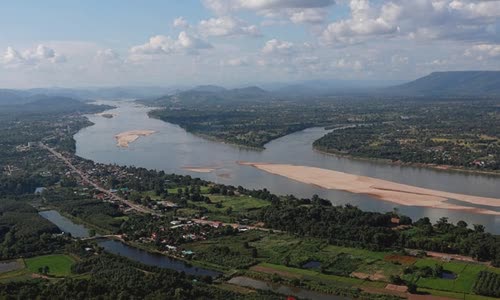China this month reduced the rate of water discharge at the Canh Hong hydroelectric dam in Yunnan for 20 days, causing the water level in the lower Mekong basin to drop.
Thailand's National Water Command Center said China's Ministry of Water Resources announced on January 5 that the Canh Hong dam reduced its discharge rate from 1,904 m3 / s to 1,000 m3 / s, or about 47%, within the range of

The Mekong River stretches across the border between Thailand and Laos in 2019 Photo: Reuters.
The Mekong River Commission (MRC) also received a notice from China the same day and said China's move "led to a change in the water level of the Mekong River through Thailand, Laos and Cambodia".
MRC said that although China announced that it began to reduce water discharge on January 5, in fact, it found that the water discharge from the Canh Hong dam decreased from 1,410 m3 / s on December 31, 2020 to 768
China made the announcement a day after the Mekong Dam Surveillance Project, partly funded by the US State Department, wrote on social media that China did not notify neighboring countries when the Canh Hong Dam began.
The Mekong River has a total length of about 4,350 km, originating in China (Lan Thuong is the name of the Mekong River in the Chinese territory) and flows through Cambodia, Laos, Thailand, Myanmar and Vietnam before pouring into the East Sea.
The MRC and its member countries repeatedly called on China to share information about Lan Thuong's flow and the operation process of hydroelectric dams in the upper Mekong.
Researchers say Beijing's activity is one of the main causes of the recent downstream drought affecting people's livelihoods.



 Sijo S Karthi
Sijo S Karthi








